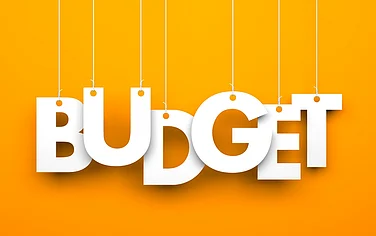Achieving correlative economic growth has become a major concern over the recent past and as we reach the Union Budget 2025, everyone is looking for positive gaps and changes in this Budget period. One of the great priorities that we have is the creation of green jobs. Opportunities for an employment that work to enhance the economic position of India, while at the same time work towards the betterment of the environment.
The youth unemployment in 2024 stood at an approximate 10.2%, which is a huge concern for India, especially because over 66% of the population is under the age of 35. This is exactly why India needs to capitalise on its green economic potential. It is essential we tackle some of the gaps and challenges, but the Budget presents an opportunity to take this promise further and inspire a green economic revolution.
In 2025, India finds itself at a crossroads. As a signatory member of the UNFCCC, India met the stipulated targets of its Nationally Determined Contributions (NDC) in 2023. Now, the focus must be on formulating and promoting green job creation policies to achieve the revised NDC objectives. Green energy has the potential of generating over 50mn jobs by 2030, thereby underpinning the Indian economy.
The approach is designed to help the youth, fuel industrial development, and aid in global sustainability growth all at once. If these policies are well put into action, they will definitely facilitate India’s commitment to green economic growth while still achieving its net zero goals by 2070.
Green Jobs Environment in India
To foster further development, India has already taken significant steps in creating modules for green job development. The Skill Council for Green Jobs was purposefully incorporated in 2015 to provide a solution to the supply-side challenges of the emerging climate resilient technologies and India’s global responsibilities as enshrined in the Nationally Determined Contribution (NDC) under the UNFCCC.
The current focus on green jobs should also help in meeting the updated NDC goals in advance. Employing programmes, such as PM-KUSUM, which promotes the installation of solar pumps in rural areas, and the PLI scheme for solar manufacturing, are also creating employment opportunities. For example, the solar energy PLI alone has created 30,000 direct and 120,000 indirect jobs. According to International Renewable Energy Agency, in India's renewable energy sector, the total number of jobs reached an estimated 1.02mn in 2023.
But there are still numerous difficulties that exist. A report from the Council on Energy, Environment and Water showed a gap in the India renewable energy workforce of almost three times to achieve the target of 500 GW of non-fossil fuel capacity by 2030. The aforementioned gaps in skills, training and private sector involvement are still hindering progress.
Global Lessons
To solve these issues, India can look at the international advances made in the domain of green employment. For example, after the green jobs' act of 2007 in the US, it is estimated that by 2020 green jobs accounted for 6.5% of all jobs within the country. There were around 9.5mn recorded green jobs at that time. Similar growth patterns can be observed in Europe and China.
This trend makes it clear how quickly the Indian economy needs to shift into implementing a green job strategy to solve the dual problem of fostering economic development while protecting the environment. With so many people entering the workforce and the increasing threat to the environment, investing in renewables, sustainable farming and energy efficient buildings is possibly one of the most beneficial decisions for India. These sectors in particular will assist India in servicing its climate change goals and at the same time reduce rural poverty through creating a large amount of employment opportunities. Furthermore, green employment can aid in closing the rural-urban divide.
Expectations from the Budget
Against this backdrop, India’s Budget 2025 is expected to take a proactive approach to accelerate the green economy by emphasising green jobs and entrepreneurship, promoting circular economy and green technology integration. A multi-pronged strategy is essential to address existing challenges and unleash the potential of a young, dynamic workforce. The policies shall facilitate cleaner, greener economic growth and in addition, also attract investments in the sector.
Invest in Skill Development
At the heart of this strategy is the idea of engendering a workforce that can actually learn green skills. Considerable funds will be applied to local vocational education in green construction, renewable energy technologies, such as solar, wind, and hydrogen and sustainable agriculture.
It is clear from the Skill Gap assessment report presented in 2024 that the government is focusing on National Green Hydrogen Mission while aiming targets on skilling and job creation across the hydrogen value chain. The mechanism should, thus, be further improved by alignment with emerging market demands and through public-private partnerships. We can rely on the skill council of green jobs to tag and integrate the requirements on green hydrogen and other domain of sector skill into vocational education.
Strengthen Public Employment Schemes
Alongside skill development, public employment schemes should diversify to include climate-resilient activities. Public initiatives such as the Mahatma Gandhi National Rural Employment Guarantee Act should be expanded to include such activities as afforestation, land restoration, climate-resilient infrastructure, and renewable energy installations. Then, schemes supporting renewable energy and organic farming should have their allocations enhanced in order to generate sustainable jobs.
Incentivising the Private Sector to Invest
The robust green economy essentially requires the participation of the private sector. To incentivise companies that lead to the creation of green jobs, the government should possibly give tax-induced advantages, grants, and less-cost borrowing. Those sectors that may thrive are likely to be electric vehicles, renewable energy storage and climate-smart agriculture. Besides that, some innovative financing solutions could accelerate growth in these areas and, at the same level, lighten the financial burden on the Government.
Promote Green Economy in Entrepreneurship
Building this entrepreneurship in the green economy is in addition to another crucial pillar. By channeling the government's fund of green entrepreneurship, different startup entities would get assistance for climate-smart solutions. Financing, mentorship vehicles, and innovation hubs should help boost business capacities among the young entrepreneurs in renewable energy. Moreover, some of the major sectors need a boost in terms of green investment collectively.
Establish Training and Certification Standards
Equally important is the establishment of national green skills standards. To address skills gaps, collaboration between the government, industry stakeholders and academia is critical to set national green skills standards.
Support for Workers in Transition
Changes to a green economy will inherently displace jobs previously established in the carbon intensive sector. The kind of transition mechanism that provides for the imminent adjustment is created by the inclusion of Just Transition Schemes that provide for financial support, retraining, and employment coaching for moving job seekers to other employers like renewable energy, clean mobility, and energy efficiency.
Promotion of R&D
The creation of jobs depends in large part on new green technology. Investments in research and its outcome like renewable energy, sustainable materials, and climate-resilient infrastructure will, in turn, create new opportunities for academia, engineering, and manufacturing.
Fostering the Adoption of Green Practices by MSMEs
Justifying support for large-scale endeavors, the importance of MSMEs in realizing energy-efficient and circular economy practices is significant. MSMEs need to receive budgetary support in the form of subsidies to ensure that they adopt technology and green jobs. Just image MSMEs serving as sustainable fabric technologists, zero-waste experts, eco-brick manufacturers, EV component makers and IoT specialists. This will go a long way in allowing the MSMEs, which are the real engines of growth for India, to lead the nation on a path toward a sustainable and resilient future.
A Long-Term Vision for Green Growth
While these are immediate steps the government could take in the upcoming budget, we need a solid forward-looking plan that must include private investment and innovative financing for developing climate change and afforestation projects. India has a vast biodiversity and underutilized green landscapes. These hold immense potential for eco-tourism, sustainable forestry, agro forestry and carbon credits.
We need to think of investing in these areas which can create millions of jobs, foster climate resilience, and place India as a global leader in nature-based solutions. This will also strengthen our efforts to offset global targets against various climate agreements. And lastly and most importantly, this will lead to a sustained behavioral change in India where we will be adopting such sustainable practices as a way of life through the stewardship of the Ministry of Environment, Forest and Climate Change and the Sector Council for Green Jobs as the guardian of this groundbreaking shift.
(Amit Patjoshi is the CEO and Sandeep Lanjewar is the Director of Palladium India.)
























